By June Roberson
After setting the bar high earlier this weekend with his exceptional Emporio show, Giorgio Armani had the opportunity to leave Milan Fashion Week with either a transcendent finale or a somewhat jaded one (spoiler: it was not the latter). Taking place in the heart of Milan, the show invited us to explore the depth of Armani’s history and his attribution to Milanese culture as his primary inspiration. As recent inconsistency in creative direction within rival houses has sent frenzied whispers through the industry, Armani’s personal commitment to this role since the brand’s emergence in 1975 has allowed for a quiet continuity that few can claim. This subtlety is emphasized in the undertones of his work, permitting the figurative overlay to illustrate scrupulous innovation with each season.
Contextually, we were placed in a somewhat utopian atmosphere, indicative of the ideal European summer — relaxing off the coast of Positano or even exploring a hidden Greek oasis, as suggested by the nautical blue and white ambiance often associated with the alluring aesthetic of the islands. A sapphire backdrop illuminated the three-part runway, while the encompassing walls housed a gorgeous ocean horizon. Obsidian-like stones incorporated notes of midnight depth that were featured throughout several of the collection's looks.

From pieces suitable for a wandering linen-clad tourist to garments even a devout native would feel proud to don, the brand referred to this expression as, “... a relaxed, free way of being”. A his-and-hers style opening featured a pair of complementary gray two-toned suits tailored in true relaxed Armani fashion. Having closed his most recent Fall/Winter Men’s Collection with gender fluid, duo-style evening looks, this continuation reinstated Armani’s focus on the versatility within collections and proficiency in highlighting a woman’s silhouette just as effectively as a man's. The quarter-zip accent at the base of the women’s trouser offers the choice between a more tapered pant, or a looser flow for whatever the occasion warrants (Look 1).
The overall imagery rested in quintessential Spring/Summer hues of powder blue, pistachio green, cream, and taupe, while strategically incorporating bursts of azure and cyclamen to break up monotonous neutrals (Look 97). Netted sweaters and wide-brimmed hats adorned with rope accents indicated practical sun protection and alluded to the summertime aesthetic (Look 24). African-inspired motifs, metallic trousers and jackets, draped nonchalantly over shoulders, and handbags further characterized a focus on cultural expanse and practical execution (Look 47).
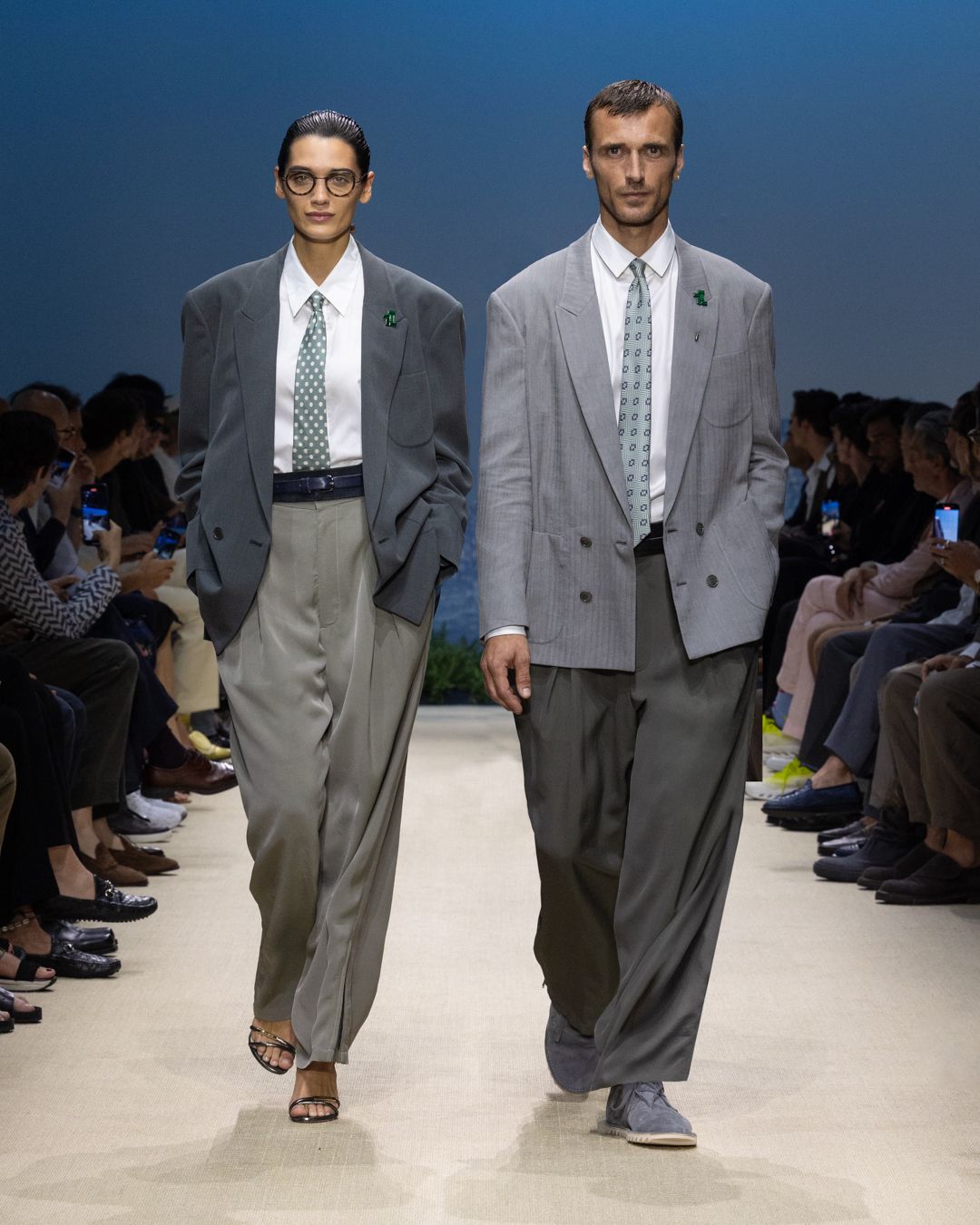
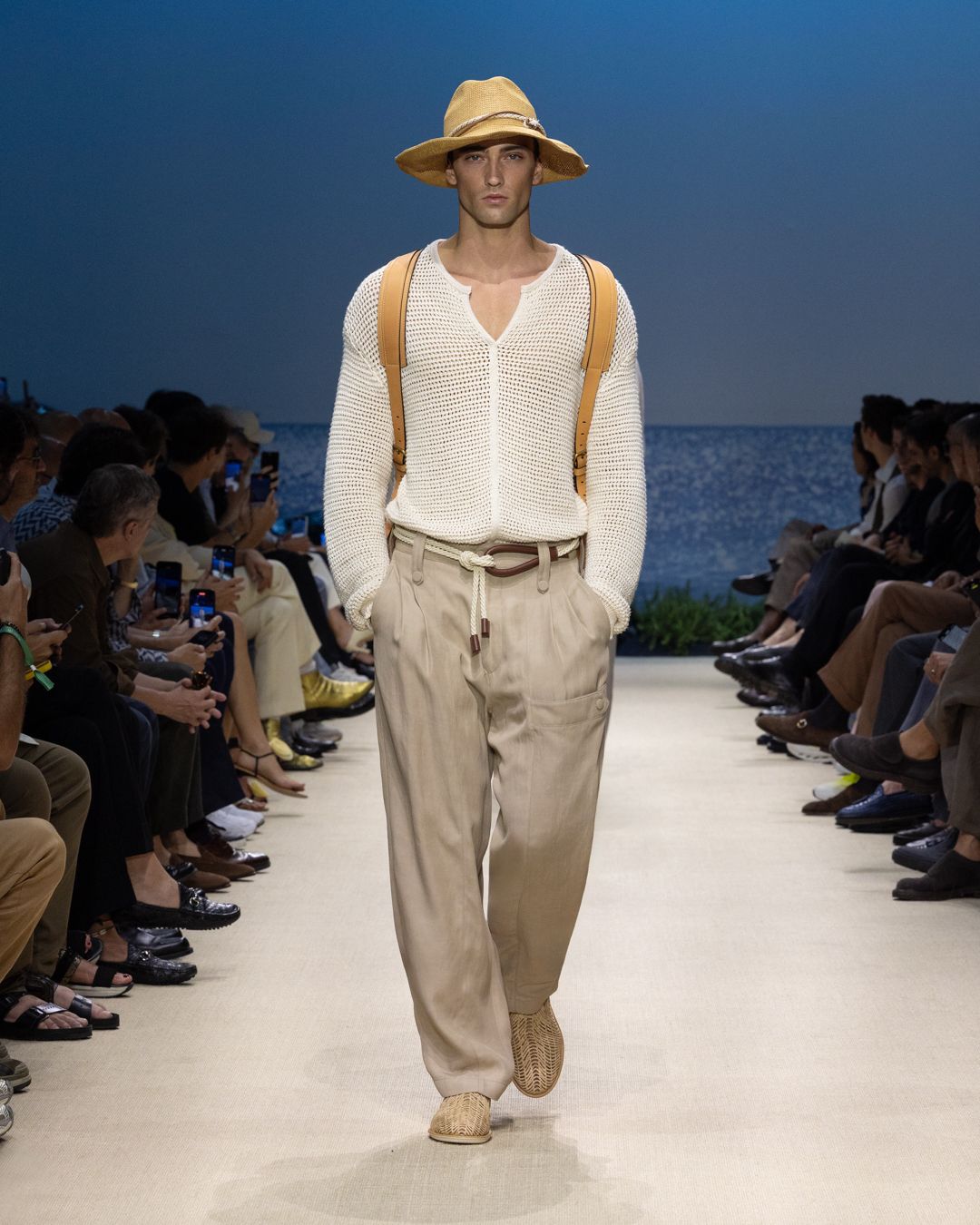
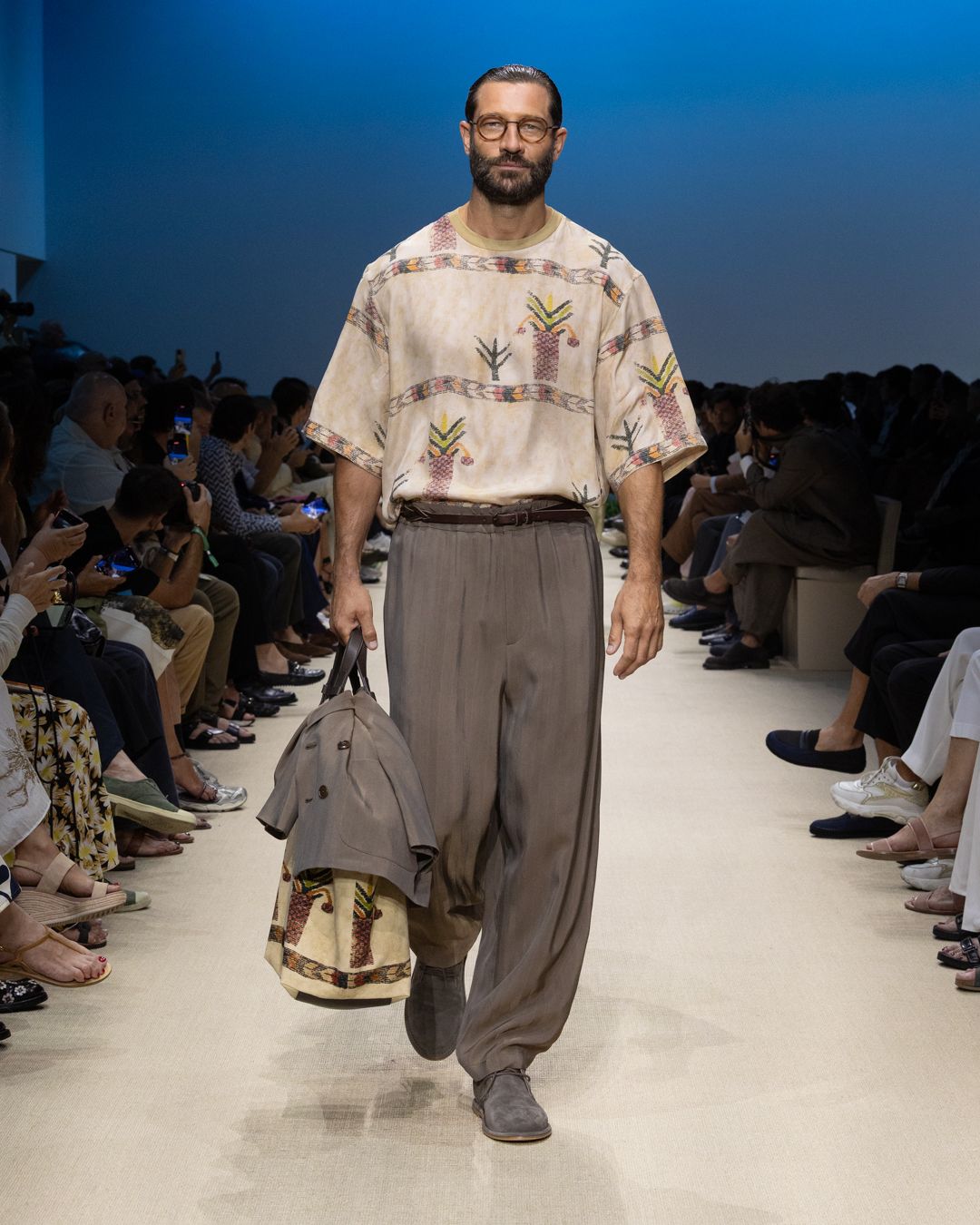

Furthermore, an array of navy blue, metropolitan gray, and black looks permeated an otherwise classic seasonal palette. Although often considered unorthodox colors for a summer line, make no mistake that this choice was fully intentional. It succeeds in epitomizing one of his oft-implied philosophies that there is more individuality and intent found in how one wears an outfit, and the context in which it is worn, than there is in deriving such definition from the garment itself, regardless of color, fit, design, or season (i.e. dark can feel light, in the same way that even light can exude darkness). Within one look we see the fusion of western corporate fashion and Japanese influence. A tie is visible beneath a garment whose left panel crosses distinctly over the right, indicative of the traditional Japanese kimono, and fastens with a sash-like security at the waist (Look 111). A mesh undershirt helps transform a sultry ensemble into a breathable summer staple (Look 108), and bejeweled evening finales paralleled the natural glimmer of the room serving as a reminder of its opulence (Look 115).
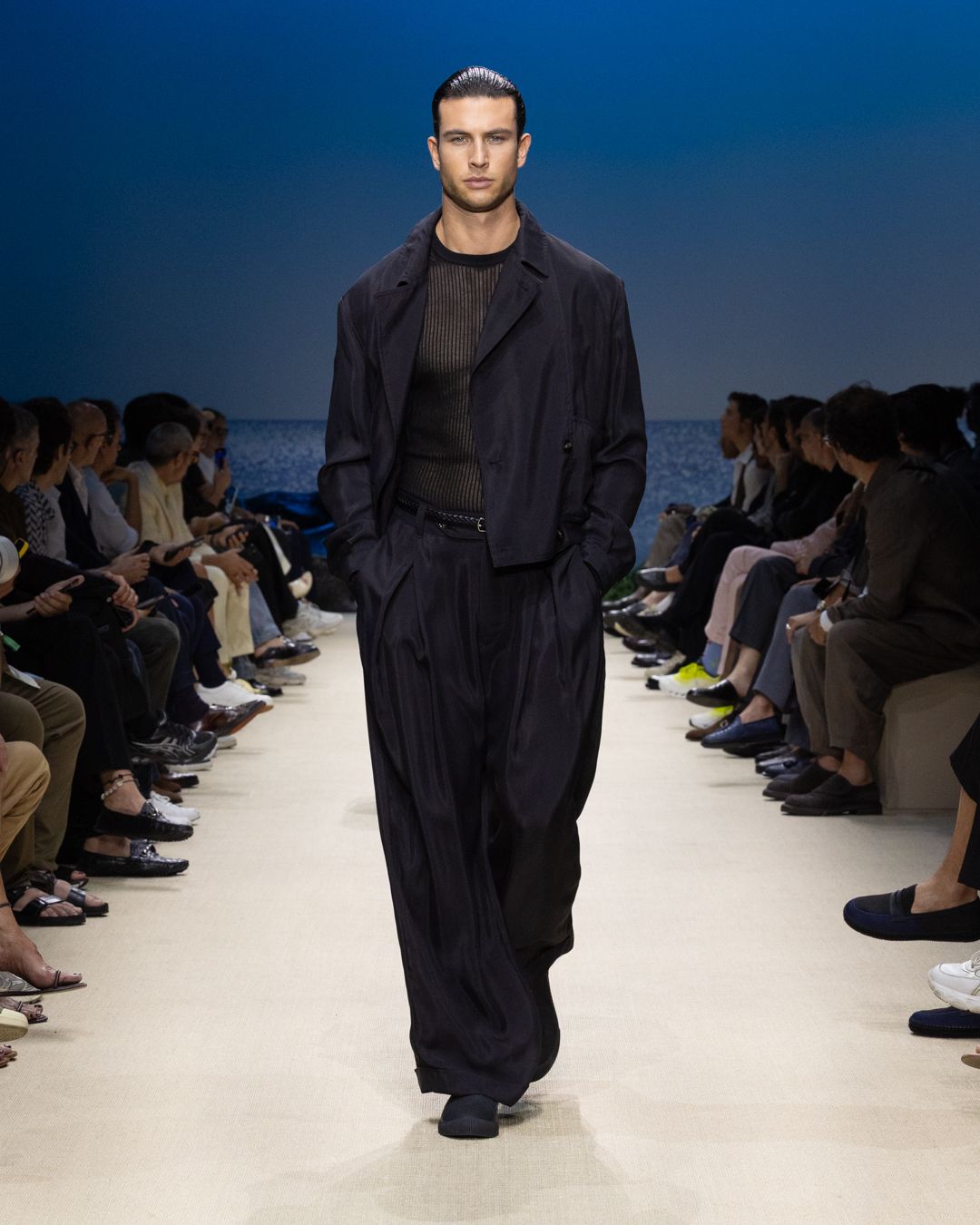
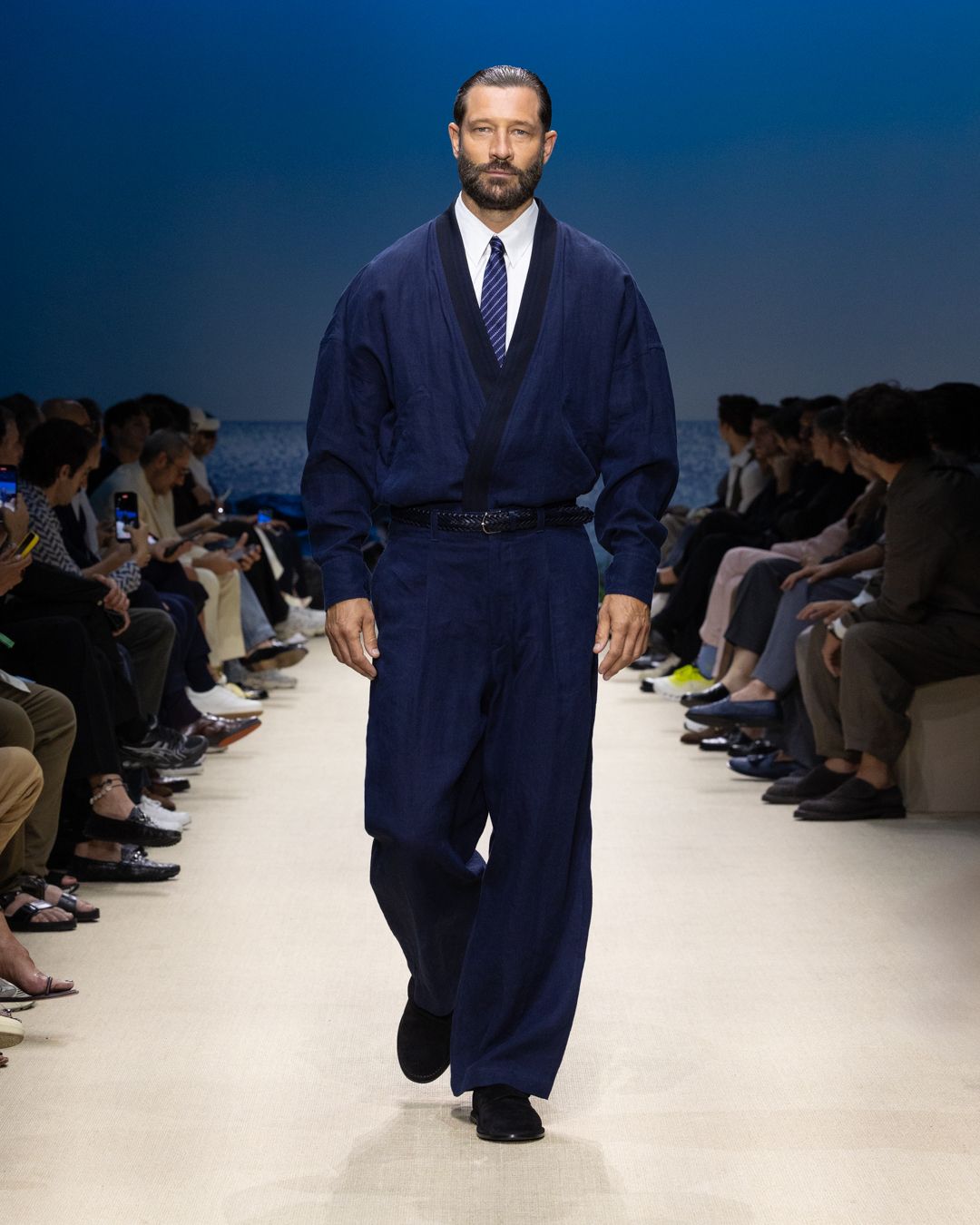
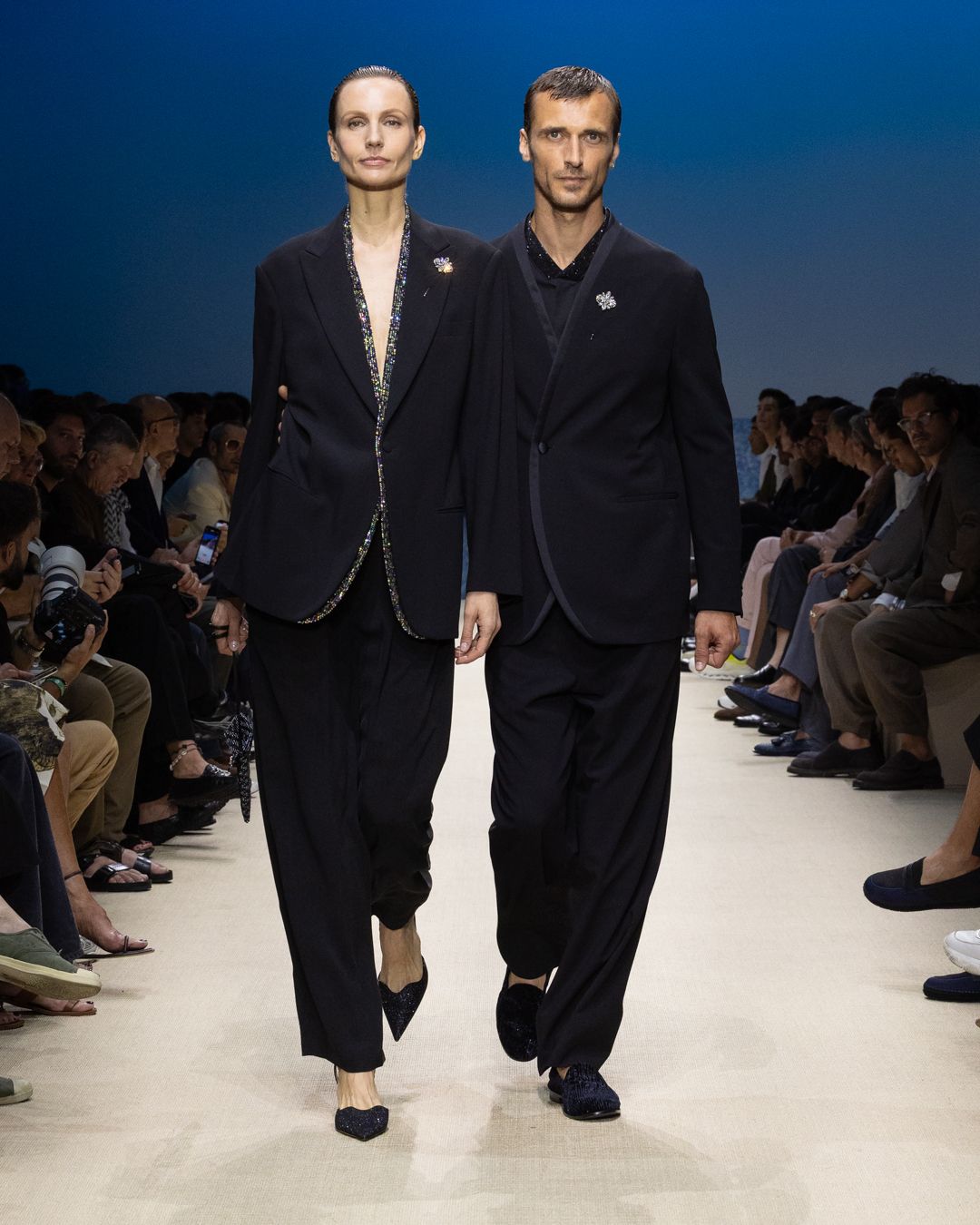
A distinguishing saunter-like stroll of the manifold set of models alluded to modest authority and unassuming elegance–such undertones that are capable of inspiring even the most indifferent fashion dilettante.
Notable Attendees
There was no shortage of acting stardom in attendance at the Giorgio Armani Menswear Spring/Summer 2026 show. Giancarlo Esposito, known for his pivotal role in American series Breaking Bad; Jason Isaacs, more commonly known as Lucius Malfoy in the Harry Potter franchise; Simu Lu, a relatively recent addition to the Marvel Cinematic Universe, and several other familiar favorites made front row appearances in support of the brand.
Directors Fatih Akin and Ferzan Özpetek also attended, with Akin having premiered his latest film Amrum at this year's Cannes Film Festival. Additionally, costume designer Paul Tazewell, a two-time Oscar winner who also won Best Costume Design for Wicked earlier this year. Other notable guests include comedian Benito Skinner, dancer Sergio Bernal Alonso, and chef Jackson Boxer, their presence underscoring the significance and prestige long associated with Giorgio Armani.
Il mondo è bello perché è vario. (The world is beautiful because it is varied)
In an industry often cyclical in nature and notorious in its struggle to differentiate signature from redundancy, Armani's constant evolution, yet appreciation of the past, has allowed him to elegantly evade such a trap and leave little reliance on opinion. The ingenious nature of his work can only be stated as irrefutable fact. Unfortunately, the icon's absence left an ache of incompleteness as Leo Dell’Orco (head of menswear design) took a bow in his stead — indicating the denouement of the show, as well as our time in Milan. That said, the collection itself left no such feeling. Despite the unprecedented and ambiguous external environment that our world currently faces, fashion finds comfort as Armani reminds us that it is the subtleties of life, expression of self, and state of steadfastness within that expression that speaks to the masses yet resonates acutely with everyone. This is the narrative that has solidified his distinct reputation and notoriety as one of the fashion industry’s most galvanizing inspirations.
